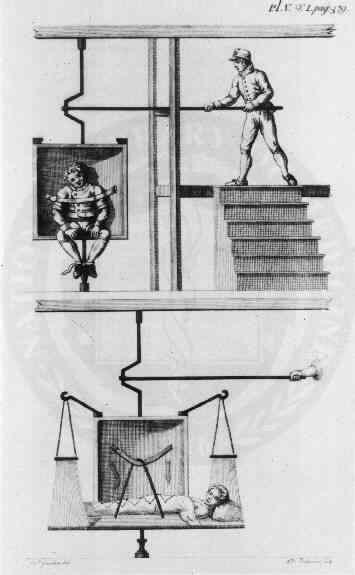
Psychiatry in Liverpool: 18th Century
The earliest records start towards the end of the 18th century. This was the beginning of a period of humane reform that was spreading in Western Europe.
In 1790 the population of Liverpool was 55,732. It already had an Infirmary and a Workhouse. The Infirmary, built in 1745 stood on what is now St. Georges Plateau, and Brownlow Hill Workhouse, built in 1770, stood on the site of the present Metropolitan Cathedral.
Methods of treatment of the insane in those clays have been described as barbarous. These unfortunates wore confined and cruelly repressed, beaten. starved, manacled for acts over which they had no control and kept in filthy rat-inrested dungeons without light or clothing. The only medical treatments were shots in the dark such as 'Whirling Chairs', Damp Blanket therapies and to bleed the very violent until they were exhausted.
 |
 |
Stimulated by the example of the York retreat, a Quaker foundation, the first house in Liverpool for care of the insane, the Lunatic Asylum was opened in 1792 due to the efforts of James Currie who had been elected physician to the Liverpool Infirmary in 1786.
Currie was a remarkable man in many ways. He supported the French Revolution. In a town that flourished by slavery, Currie was an Abolitionist and yet also remained the fashionable doctor. His coach and pair was to be seen outside the house of has friend 'William.Roscoe He founded the Athenaeum. Currie as an immigrant from Scotland was not a Freeman. He therefore, could not hold office. He was a friend of Burns and his first biographer. It is interesting to speculate how liberal his views would be considered to-day. Currie urged special provision for lunatics. In a letter to 'The Liverpool Advertiser" he said no disease was so dreadful as insanity and he made a plea for an asylum (quote) "To provide accommodation for the poor suitable to their circumstances, and to make provision for those of superior stations who are able to remunerate the expense; it holds out a shelter both for the curable and incurable" He ended the letter by again stressing the needs of the lunatic when he said.. - "our honour will be increased, and the systems of our charities completed by an institution for the health of his immortal mind". The dissenters who thought "They are all right in gaol" [referring to the mentally ill] were over- ruled and in 1789 his proposal was adopted.. Eventually, £2,000 was raised 'by subscription and the building was completed for £5,918. It stood in the gardens adjoining the Liverpool Infirmary and had 80 beds. An experienced and approved Keeper and Matron were brought from St. Luke's Hospital London. The Governor was a Mr. John Davies.
Sources include:
Vaillant C M (1963) An Historical Sketch of the Emergence of Liverpool Psychiatry. The Journal of the Liverpool Psychiatric Club - Vol 1.